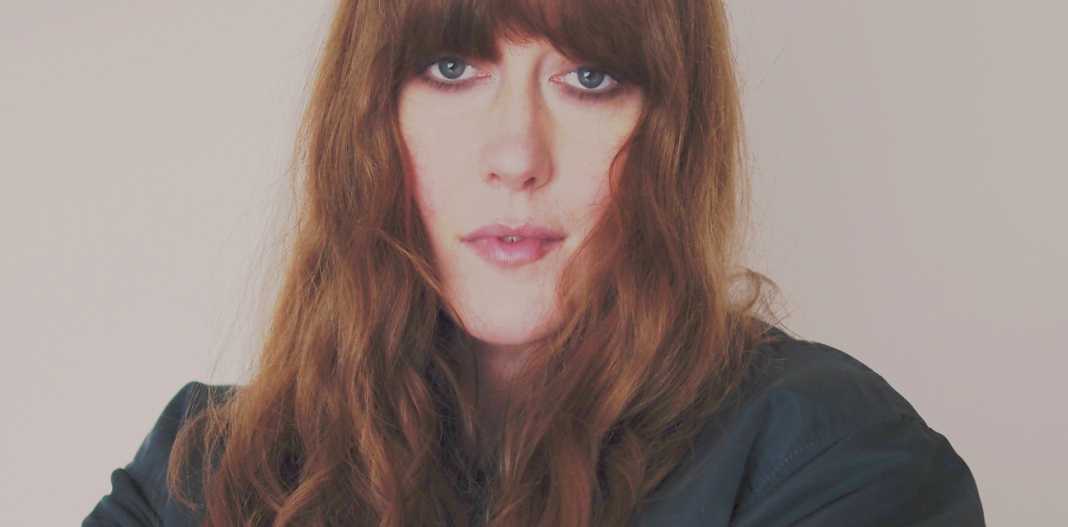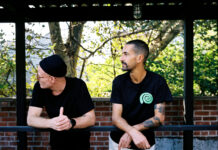Photo: Press (Karen Gwyer)
Karen Gwyer’s mix for our Groove podcast starts with some repetitve, sweet string sounds and William Basinski-like, unidentifiable sounds. Slowly, a beat emerges after a few minutes, a rough-sounding and irritatingly monotonous kickdrum. It takes about 7 and nearly a half minutes until Gwyer’s mix takes on the dynamics of a conventional Techno or House set. Not that the US-born producer currently residing in the UK would make music that could be classified as Techno or House in the purest sense of the word. However, her releases for No Pain In Pop, Opal Tapes, Nous and Don’t Be Afraid aim at the dancefloor, she explains in our interview. Which doesn’t mean that Gwyer’s mix, just like her music, is conventional in the strict sense of the word.
You’ve once said in an interview that you “want [your] music to not be what people expect”. How does one even achieve that?
I can only claim to want to achieve it, I’m afraid, not to have the slightest clue as to how to go about it. And anyway, I doubt that there is any predictable type of sound that people really expect now from dance music. I reckon that was a slightly ill-considered thing for me to have said. It doesn’t really mean anything.
What is your relationship with House and Techno like? Dance music definitely is the blueprint for your work, but you take a lot of liberties with it.
I don’t think that Techno and House are fixed forms with identifiable universal benchmarks, free from time and locality. But I do often feel like I’m being too conventional with my music. I can’t describe at all what that means, though I can say that I try to work towards direct yet complex beat structures and tend to produce tracks that are without a doubt danceable, but not likely to be dj tools.
After a slew of releases on more “leftfield”-orientated labels like Opal and No Pain In Pop, your last EP came out on Don’t Be Afraid, possibly the most dancefloor-friendly imprint on which you’ve released. Does that reflect your development as an artist?
I’ve reached a point where I really just want to get booked to play dance music to people who are likely to dance. That’s when I’m the happiest. I’ve been doing that in practice in my live sets for a long time now, but I get the sense that I’m still seen as somebody who plays meandering, textural music in churches. Which I did do, once or twice on highly visible video platforms that love to come up at the top of a damned google search. So my current approach with releases is working with labels that are fortunately both massively supportive and more immediately associated with the dancefloor.
I am also asking this since your debut EP for Don’t Be Afraid references the process of mitosis. What were the ideas that informed this EP?
Unfortunately none, really; I can’t begin with an idea and end up with music. In fact, the less I think about it, the easier it is to work. If I start thinking, I just think myself into a hole. The mitosis reference is documentation, as most of my release names are, which anchors it in a period of my life and refers, in this case, to a specific situation that was occurring while I was working on the record. Some people have assumed that my state of pregnancy informed the work I produced at that time. I routinely have to counter this with the assertion that it had no more influence on the material than my haircut did, which I think may be disappointing for those looking for a sort of deeper, primal experience of the “female producer.” Perhaps I’m doing myself no favours, then, naming my releases as such. But really, I’ve got other things to worry about, and I’m not going to sweat it.
You are also known for your live sets, which usually are partly improvised. What exactly is your approach there – how does, for example, the setting influence your decisions as a performer?
Roughly, if the crowd is really enthusiastic, I try out more new tricks, pushing the small amount of gear on the table further and get a combination of weirder, crushing, and delicate sounds out of it. And I play around with the beats a bit more, to break up any sort of continuous flow in the kick. If the crowd seems up for it, I’ll go for a big, tense build-up, pulling out the kick for ages until it feels too itchy and a bit wrong.
Just like your own productions, your contribution to our Groove podcast takes some unexpected turns. What was the idea behind it and how did you record it?
I just chose some music that I thought worked nicely together and may or may not be on everyone’s radar at the moment.
Last but not least: Where can we see you behind the decks – or live – in the forthcoming weeks?
I’m playing live in Berlin on November 25th/26th for the Mother’s Finest night at Griessmuehle with a great group of people including Kowton, Laurel Halo, Peverelist, Hodge, Don’t DJ and loads more. I’m really looking forward to this one as it has been too long since I last played in Berlin.
Stream: Karen Gwyer – Groove Podcast 81
01. Martijn Comes – Song Of The Rock To Rise
02. zolaa. – Kaban Groove
ß3. Maxine & Cleo – Celestial Frame Of Mind
04. Plebeian – IHave M2
05. Bloempot – R.Y.B.
06. Beau Wanzer – Whistle When You’re Low
07. Mitchell Akiyama – With Rift
08. Plebeian – Spokes
09. Dual Shaman – Rite
10. Antonio – Danger
11. Mordant Music – Dungeon Sequence
12. C – Diphtongues
13. Unknown – Untitled





